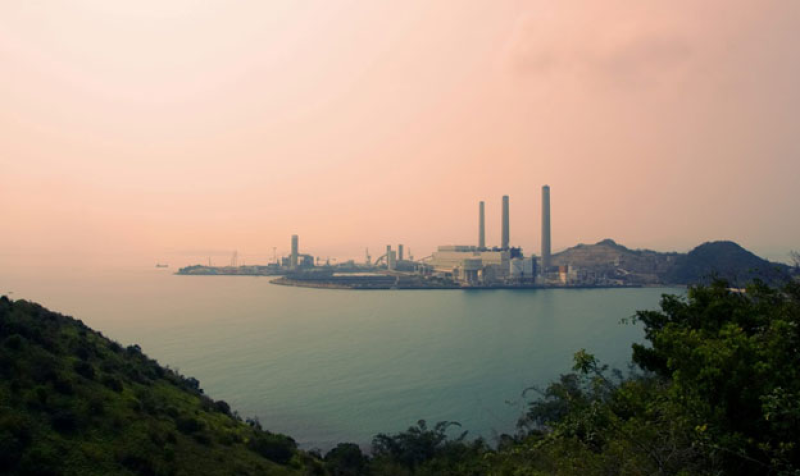- Trump considering military options on Greenland; Europe rejects |
- Fertiliser crunch threatens Kushtia’s onion boom despite high prices |
- Security Council Divided on United States' Venezuela Action |
- Over 1.53m voters register for postal balloting: Shafiqul Alam |
Coal Dominates Asia-Pacific Despite Green Energy Push

A coal plant in Lamma Island, Hong Kong.
Global investments in energy exceeded USD 3 trillion in 2024, with at least USD 2 trillion directed toward clean energy technology and infrastructure. Despite this progress, fossil fuel consumption continues to rise with little sign of slowing.
China led energy transition investments, accounting for 48 percent, followed by the United States (17%), Germany (5%), the United Kingdom (4%), and France (3%). These investments have paved the way for green technologies such as solar panels, electric vehicles, and battery storage to become more affordable. However, such advancements remain largely confined to high-income countries. Emerging markets and least developed countries (LDCs), excluding China, still heavily rely on coal and fossil fuels to meet their energy needs.
The Asia-Pacific region faces the most significant challenge in transitioning from fossil fuels to renewable energy. In 2023, it accounted for 47 percent of global energy demand, with China, India, Korea, Japan, and Indonesia responsible for most of this share.
China plays a dual role—leading the world in clean energy investment while also being the most coal-dependent nation. Globally, clean energy investment per capita is USD 131, while the Asia-Pacific region lags slightly behind at USD 115. Excluding China and other high-income countries, this figure plummets to just USD 18 per person.
LDCs in the region account for only 1.4 percent of global energy transition investments from 2020 to 2023. However, at COP29, they pledged to boost their renewable energy capacity from 20 gigawatts (GW) in 2023 to 58 GW by 2030—a 290 percent increase.
Meanwhile, in Southeast Asia, energy demand is projected to grow by 25 percent between 2024 and 2035. By 2050, the region’s demand may surpass that of the European Union.
In 2023, the United Nations Economic and Social Commission for Asia and the Pacific (ESCAP) reported that 81 percent of new renewable energy sources were cheaper than fossil fuels. Yet coal remains dominant in the region.
In 2023, the Asia-Pacific generated 45 percent of its energy from coal—more than any other region—using the most carbon-intensive source available. The region hosts 79 percent of the world’s operational coal plants, generating 1.69 terawatts (TW) out of the global 2.13 TW of coal-fired capacity.
Adding to this, 96 percent of all planned coal capacity—553 GW out of 578 GW—is located in the Asia-Pacific. China accounts for 53 percent of current capacity and 71 percent of future capacity. India, Indonesia, and Bangladesh also contribute significantly to regional coal demand.
Coal is not just an energy source; it is an economic engine. Three of the world’s top coal exporters—Indonesia, Australia, and Mongolia—are based in the region. Indonesia is the world’s largest coal exporter, with China and India as its top clients. Australia follows, exporting over USD 91 billion worth of coal from 2023 to 2024, while its mining industry employs 50,000 workers. Mongolia’s top export is coal briquettes, valued at USD 8.43 billion.
We already have the technologies to reverse the trend—battery storage, nuclear energy, low-carbon hydrogen, and limited carbon capture. The real challenge lies in implementing and scaling these technologies effectively.
Without substantial policy and investment shifts, the Asia-Pacific’s dependence on coal could jeopardise global progress on energy security, economic stability, and SDG targets—leaving many behind in worsening conditions.
To meet the net-zero emissions target and the UN’s SDG 7 (ensuring access to affordable, sustainable energy), global energy investment must increase to USD 2.2 to 2.4 trillion annually by 2030. Of this, at least 90 percent should focus on clean energy.
Despite the urgency, coal demand among ASEAN economies is projected to rise by 5% annually—from 491 million metric tons in 2024 to 567 million by 2027. This continued reliance will make future diversification harder and costlier.
Air pollution in some of the world’s most polluted cities—Delhi (India), Dhaka (Bangladesh), Lahore (Pakistan), and Hotan (China)—already exceeds World Health Organization (WHO) safe limits by 10 to 20 times. Simply breathing in these cities poses a serious health risk to millions.
Faith Birol, Executive Director of the International Energy Agency, warns:
“Today’s energy world is moving fast, but there is a major risk of many countries being left behind.”
The Asia-Pacific is home to two-thirds of the global population and contributes 46 percent of global GDP. Progress toward the SDGs is nearly impossible without the region's active participation.
“Nowhere is this challenge – and opportunity – more urgent than in Asia and the Pacific,” said Armida Salsiah Alisjahbana, UN Under-Secretary-General and Executive Secretary of ESCAP.
“This is our chance to build a more resilient, equitable, and sustainable economy for all. We aim to foster solutions that are regionally grounded, technically sound, and financially viable. Unless Asia and the Pacific lead boldly, the global transition will fall short of expectations.”

